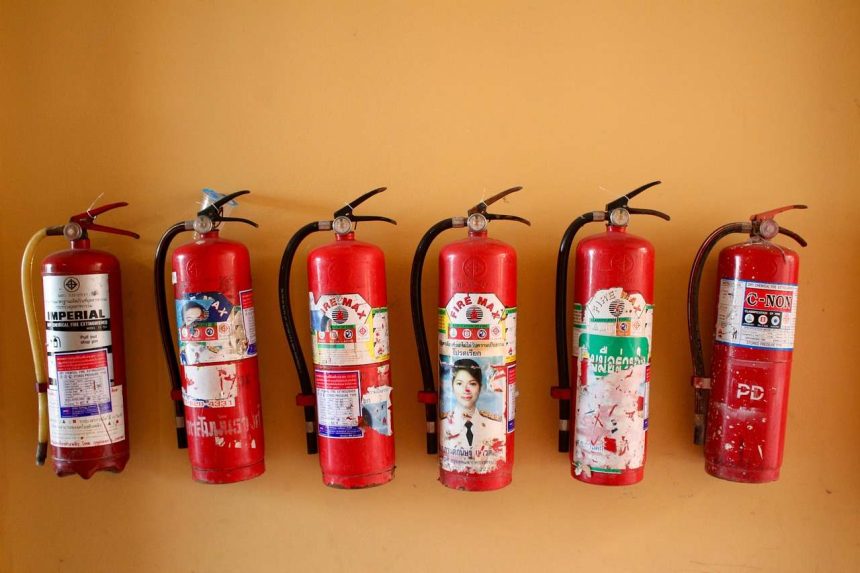A fire is essentially a chemical reaction that produces heat and light. For fire to ignite and sustain, three essential elements must be present: fuel, oxygen (or air), and heat. These elements must raise the temperature of the fuel to its ignition point. To put out a fire, one or more of these components must be removed. This can be achieved by either reducing the temperature of the burning material, cutting off the oxygen supply, or removing the fuel itself. All fire extinguishers operate based on these three principles.
How Fire Extinguishers Work
There are various types of fire extinguishers, each designed to handle different fire situations. Let’s explore some of the most common fire extinguishers and how they function.
Water: The First Fire Extinguisher
Water has likely been used as the earliest fire suppressant and continues to be one of the most effective fire extinguishing methods today. When water is applied to a fire, it lowers the temperature of the burning material, making it fall below its ignition point, thus extinguishing the flames. Water can be used in several ways to put out fires, such as sprinkling, spraying in a stream, or pouring directly over the flames.
However, water should never be used to extinguish oil or electrical fires, as it can cause more harm than good. We’ll explore this further in later sections.
Soda-Acid Fire Extinguishers: Cooling and Oxygen Reduction
Soda-acid fire extinguishers are another common method used to control fires. These extinguishers utilize both water and carbon dioxide (CO2) to suppress flames. The water helps reduce the temperature, while the carbon dioxide effectively cuts off the oxygen supply, smothering the fire.
The way soda-acid extinguishers work is simple but effective. A cylindrical vessel contains sodium bicarbonate, while a separate small bottle holds sulfuric acid. A knob attached to the extinguisher is struck to break the sulfuric acid bottle, which mixes with the sodium bicarbonate. This chemical reaction produces carbon dioxide, which is then released through the nozzle to extinguish the fire.
Soda-acid extinguishers are suitable for small fires in offices or workshops but are ineffective for fires involving oil, kerosene, or electricity.
Foam Extinguishers: Smothering the Flames
Foam extinguishers are particularly useful for putting out oil fires, which water cannot safely extinguish. The foam creates a barrier between the fire and the air, effectively cutting off the oxygen supply. In these extinguishers, a mixture of sodium bicarbonate, aluminum sulfate, and licorice extract is used to produce the foam that blankets the fire.
Foam extinguishers are especially beneficial for liquid fires, such as those caused by oil, and prevent the fire from spreading further.
Specialized Fire Extinguishers: Tackling Oil and Electrical Fires
For oil and electrical fires, specialized extinguishers such as carbon dioxide extinguishers, dry chemical extinguishers, and liquid vapor extinguishers are used.
Using water on an oil or electrical fire can be extremely dangerous. In the case of an oil fire, water causes the oil to float to the surface since oil is lighter than water. As the water flows, it spreads the burning oil, making the fire worse. For electrical fires, pouring water can lead to electrical shocks, which can be fatal.
Fire Safety Regulations and the Role of Fire Brigades
It is a legal requirement to have fire extinguishers in public spaces, including government buildings, factories, and schools. These safety measures help control fires in their early stages before they get out of hand.
In larger cities, fire brigades play a crucial role in controlling and extinguishing fires. Equipped with specialized tools and training, fire brigades are essential for managing large fires that cannot be handled by portable extinguishers.
By understanding how different fire extinguishers work and the types of fires they are suited for, you can ensure proper fire safety measures and make the right decisions during an emergency.




